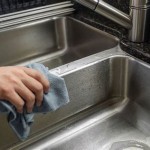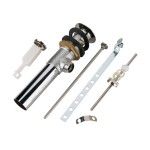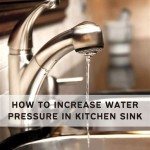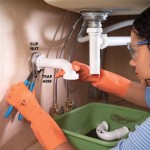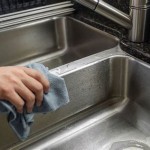My Bathroom Sink Is Leaking
A leaking bathroom sink can range from a minor annoyance to a significant plumbing problem. Understanding the potential causes and solutions can empower homeowners to address the issue effectively, potentially saving money and preventing further damage.
Identifying the Source of the Leak
Locating the precise source of the leak is the first step in resolving the issue. A leak can originate from various components of the sink plumbing, including the faucet, the drain, the P-trap, or the water supply lines. A thorough visual inspection is crucial. Check for drips, water stains, or pooling water under the sink. Pay close attention to the connections between pipes and fittings. Sometimes, a leak may only be evident when the faucet is running or the drain is in use.
To pinpoint the source, it can be helpful to dry the area completely with a towel and then observe carefully while running water through the sink. This can reveal the exact location where the water is escaping. If the leak appears to be coming from the faucet handles, it may be a problem with the internal O-rings or cartridges.
Leaks from the drain assembly are often related to loose connections or worn-out seals. Checking the tightness of the slip nuts connecting the drain pipes to the sink and the P-trap can often reveal the problem. The P-trap itself can also develop cracks or leaks over time and may require replacement.
Common Causes of Leaky Bathroom Sinks
Several factors can contribute to a leaky bathroom sink. One common cause is worn-out washers or O-rings. These small rubber components act as seals to prevent water from escaping around the faucet handles and valves. Over time, these parts can become brittle or compressed, losing their effectiveness and leading to leaks.
Corroded pipes and fittings are another potential culprit, especially in older homes. Corrosion can weaken the metal, creating small holes or cracks that allow water to seep through. This is especially true in areas with hard water, which can accelerate the corrosion process. Additionally, loose connections between pipes and fittings can cause leaks. Vibrations from water flow or even minor bumps can loosen these connections over time.
Finally, a clogged drain can sometimes lead to leaks. The increased water pressure from a blockage can strain the pipes and fittings, potentially causing leaks to develop. This is particularly relevant if the leak seems to be coming from the drain assembly itself, rather than the faucet.
Repairing a Leaky Bathroom Sink
Once the source of the leak has been identified, several repair options are available. For simple fixes like replacing a worn washer or tightening a loose connection, basic plumbing tools like a wrench and pliers may be sufficient. However, more complex repairs, such as replacing a faucet or P-trap, may require more specialized tools and knowledge.
Before starting any repair, it's essential to turn off the water supply to the sink. This is usually accomplished by turning off the shut-off valves located under the sink. If these valves are not readily accessible, it may be necessary to turn off the main water supply to the entire house. Once the water is off, carefully disassemble the faulty component and replace it with a new one. Ensure that all connections are tightened securely to prevent future leaks.
For leaks related to corroded pipes, replacing the affected section of pipe may be necessary. This can be a more involved repair requiring soldering or other specialized techniques. In cases of severe corrosion or extensive plumbing issues, it's advisable to consult with a qualified plumber to ensure the repair is done correctly and to avoid further damage.
Preventing Future Leaks
Regular maintenance can help prevent future leaks. Periodically checking for loose connections, inspecting pipes for signs of corrosion, and replacing worn-out washers and O-rings can help keep the sink in good working order. Furthermore, avoiding the use of harsh chemicals that can corrode pipes and fittings can contribute to the longevity of the plumbing system.
Installing water softeners can also help prevent corrosion caused by hard water. These systems remove minerals from the water, reducing the buildup of scale and prolonging the life of pipes and fittings. Finally, being mindful of what goes down the drain can prevent clogs, which, as discussed, can indirectly contribute to leaks.

How To Fix A Leaking Bathroom Sink Paschal Air Plumbing Electric

Bathroom Sink Drain Leaking Around Threads Premier Plumbing Inc

Common Sink Leaks You Could Probably Fix Yourself

5 Reasons Your Faucet Is Dripping Water How To Fix It

Bathroom Sink Drain Leaking Around Threads Premier Plumbing Inc

How To Fix Constant Leak Under Bathroom Bunnings Work Community

How To Fix A Leaking Bathroom Sink Paschal Air Plumbing Electric

How Can I Stop My Sink From Leaking And Why Vent Inside Stinky Hometalk

How To Fix Pipework A Tap Faucet Leaking Under The Sink Youtube

4 Ways To Fix A Bathroom Sink Leaking Underneath Fast Easy
See Also

